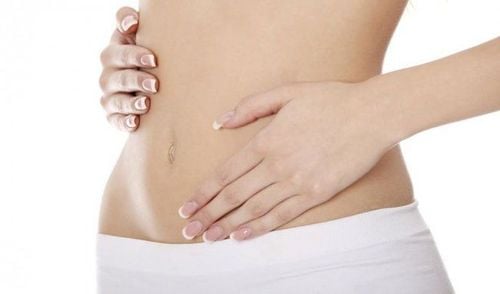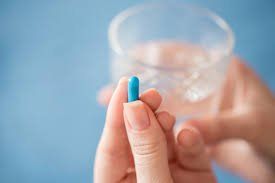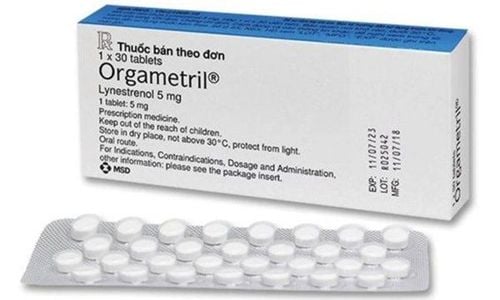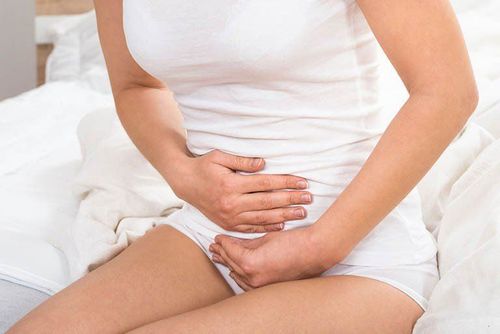This is an automatically translated article.
The article is professionally consulted by Master, Doctor Nguyen Van Thanh - Obstetrician and Gynecologist - Department of Obstetrics and Gynecology - Vinmec Ha Long International General Hospital.Menstrual cramps are very common in women of childbearing age. Although so common, many women still do not know what menstrual pain is and how to deal with it. Here are answers to 20 of the most frequently asked questions about menstrual cramps.
1. What is dysmenorrhea?
The pain associated with a woman's period is called dysmenorrhea.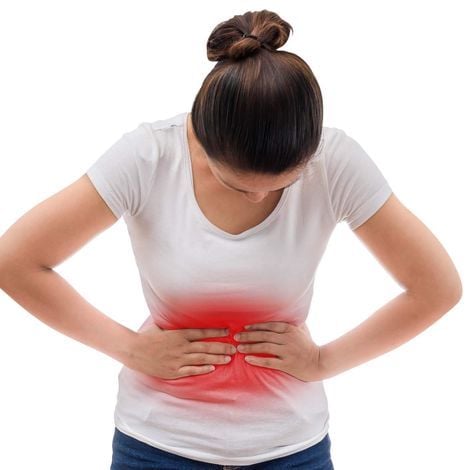
2. Is this condition common?
Menstrual pain is a very common symptom in women. More than half of women in the world suffer from pain 1-2 days a month due to the activity of their menstrual period.Trắc nghiệm: Bạn có hiểu đúng về dấu hiệu mang thai sớm?
Các dấu hiệu mang thai sớm không phải chỉ mỗi trễ kinh mà còn có rất nhiều dấu hiệu khác như xuất huyết âm đạo, ngực căng tức,… Điểm xem bạn biết được bao nhiêu dấu hiệu mang thai sớm thông qua bài trắc nghiệm này nhé!
3. How many types of dysmenorrhea are there?
Depending on the cause, dysmenorrhea is divided into two types: primary and secondary.4. What is primary dysmenorrhea?
Primary dysmenorrhea is pain that comes from a menstrual-related or ongoing cause.5. What causes primary dysmenorrhea?
Primary dysmenorrhea is caused by certain natural chemicals in the body, called prostaglandins. Prostaglandins are produced in the lining of the uterus.6. When does primary dysmenorrhea occur?
This condition usually occurs just before menstruation, because at this time the amount of prostaglandins increases in the lining of the uterus. On the first day of menstruation, prostaglandins increase very high, women will experience severe menstrual pain. In the following days, the lining of the uterus is shed, leading to a decrease in prostaglandins, and the pain level becomes milder.
7. At what age does primary dysmenorrhea begin to appear?
Usually, primary dysmenorrhea appears and "accompanies" women every time the menstrual period comes, starting from the first period in life. However, this condition will gradually improve with age and after giving birth.8. What is secondary dysmenorrhea?
Secondary dysmenorrhea originates from disorders in the reproductive system and usually presents later than primary dysmenorrhea. On the other hand, secondary pains often become more severe over time.9. When does secondary dysmenorrhea occur?
Secondary dysmenorrhea usually lasts longer than usual. Specifically, this condition mostly occurs a few days before menstruation occurs. Pain levels gradually increase during menstruation and may not go away even after the period has passed.10. What causes secondary dysmenorrhea?
Several causes of secondary dysmenorrhea include:Endometriosis: The tissues of the lining of the uterus appear in areas outside the uterus, such as in the ovaries, fallopian tubes, and on the bladder. Like the lining of the uterus, these "lost" endometrial tissues also break down and cause bleeding in response to hormone changes. This bleeding is what causes pain, especially in the days leading up to your period. Furthermore, the area of bleeding can leave scar tissue behind, causing organs to stick together, causing severe menstrual pain. Adenomyosis: A condition in which glandular tissue of the endometrium is present inside the muscle of the uterine wall Fibroids: These are benign tumors that form on the outside of the uterus. inside or inside the wall of the uterus. Fibroids located in the uterine wall can cause pain.
11. What test is done to determine the cause of dysmenorrhea?
"What to do with menstrual cramps" is a matter of concern to many women. If you notice any unusual signs, you should immediately go to a medical facility for examination and necessary tests. Your doctor will need information about your medical history, pain symptoms, and recent menstrual cycles.For accurate identification, the patient needs to perform an ultrasound. In some cases, the doctor may order a hysteroscopy to look inside the uterus.
12. Dysmenorrhea how to do?
Lifestyle changes are an effective treatment for menstrual cramps, including exercise, sleep, and stress relief. In addition, the doctor may prescribe medication to treat symptoms. Pain relievers or hormone-balancing drugs (such as birth control pills), are often prescribed.If medication does not control the pain, then the treatment will focus on finding and eliminating the cause of the pain. Sometimes patients need surgery.

13. What are the medications for menstrual cramps?
Non-steroidal anti-inflammatory drugs (NSAIDs) are drugs commonly used to treat menstrual cramps. These drugs inhibit the production of prostaglandins and reduce their effects, thereby limiting the occurrence of severe menstrual cramps.NSAIDs show their greatest activity when used on the first day of a menstrual period or as soon as pain occurs. The duration of use of the drug only fluctuates for 1 or 2 days. Women with bleeding disorders, asthma, liver damage, allergy to aspirin, stomach ulcers, are the subjects that should not take NSAIDs.
14. What birth control methods help control menstrual cramps?
Birth control methods that use estrogen and progestin, such as the pill, patch, and vaginal ring, can be used to treat menstrual pain. Progestin-only forms of birth control, via an implant or by injection, are also effective in reducing pain. In addition, hormonal contraceptives are also used by doctors.15. Drugs to treat dysmenorrhea caused by endometriosis?
In cases where endometriosis is the cause of menstrual pain, your doctor may prescribe birth control pills, implants, injections, or hormonal contraceptives. In addition, several other medications may be used to relieve pain from endometriosis.16. What alternative treatments help relieve menstrual pain?
Some alternative treatments help relieve menstrual pain, such as vitamin B1 or magnesium supplements (but there's not enough evidence to conclude how effective they are). In addition, acupuncture has been shown to be somewhat effective in reducing menstrual pain.17. When is uterine artery embolization (UAE) performed for dysmenorrhea?
Uterine artery embolization is a treatment for dysmenorrhea caused by uterine fibroids.18. How is uterine artery embolization performed?
This measure helps to block blood vessels to the uterus with small particles, thereby limiting the growth of fibroids. Uterine artery embolization can be done on an outpatient basis, meaning that after the procedure, the patient can go home without staying in the hospital.19. Does uterine artery embolism cause any complications?
Complications after this surgery, including infection, pain, and bleeding. When you detect such signs, you should immediately go to the hospital for examination.20. When is surgery necessary to treat dysmenorrhea?
If other treatments don't work, your doctor may consider surgery. The type of surgery you choose will depend on the cause of your menstrual pain.If it comes from fibroids or endometriosis tissue, surgery can be used to solve it. A hysterectomy is a last resort and may be considered if other methods have failed and severe menstrual pain occurs.

Doctor Nguyen Van Thanh has many years of experience in Obstetrics and Gynecology. The doctor was trained and attended courses in obstetrics and gynecology and infertility at Hai Phong University of Medicine and Pharmacy, Hanoi University of Medicine and Pharmacy and the National Hospital of Obstetrics and Gynecology.
Please dial HOTLINE for more information or register for an appointment HERE. Download MyVinmec app to make appointments faster and to manage your bookings easily.
Article referenced source: Acog.org




